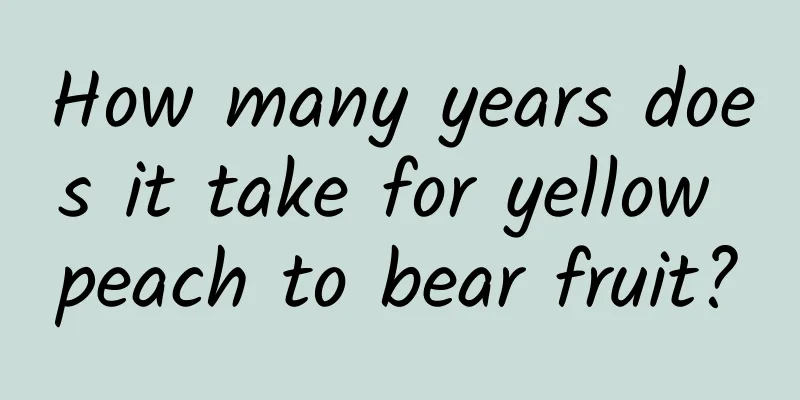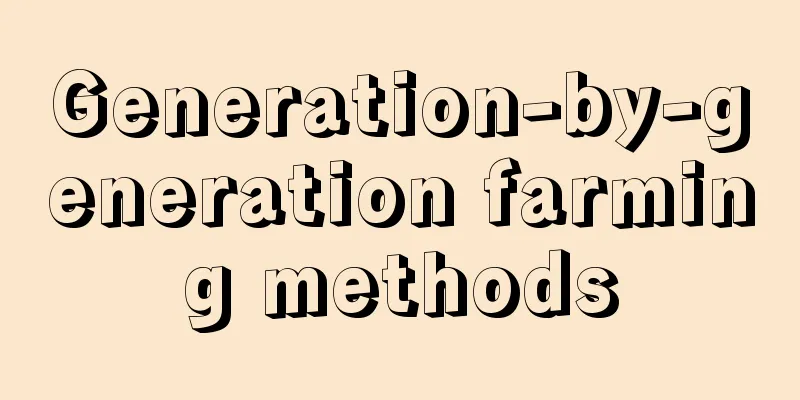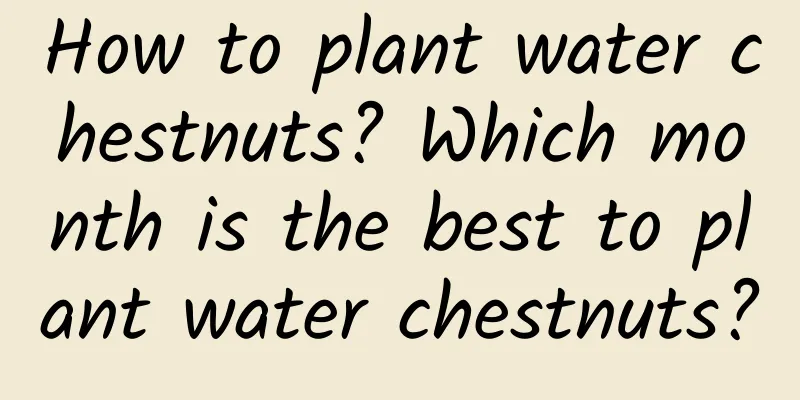How many years does it take for yellow peach to bear fruit?

Introduction to growing yellow peachYellow peaches are widely cultivated in North China, Central China, and Southwest China. Among them, the yellow peaches produced in Yanling County of Hunan Province, Wutai Town of Pingyi County, and Guidong County of Chenzhou City, Hunan Province are very famous. The varieties include Houtuo yellow peaches, Wutai yellow peaches, Yanling yellow peaches, Guidong yellow peaches, etc. Yellow peaches are suitable for planting in late winter and early spring, and it is best to complete them before the end of February. The fruit of yellow peach planting for several yearsIt usually takes three years to grow yellow peaches. If managed well, it can bear fruit in two years. The ripening season of yellow peaches is from early July to late July every summer. The ripening time of Guidong yellow peaches is around July 25, the ripening time of Yanling yellow peaches is July 15-18, and the ripening time of winter yellow peaches is early October. Yellow peaches prefer a warm and humid environment and grow well in fertile, well-drained soil. Renovate the soil in advance and apply enough base fertilizer. Each pit should be 1 meter long, wide and high. Bag the fruits to prevent and control pests such as peach borers, fruit borers, and fruit moths. Grafted yellow peach blossoms and bears fruitYellow peaches can only be truly successful if the new shoots can continue to grow half a month after germination when grafted onto peach tree stumps. Generally, they will enter the first fruiting period in the second year of planting and the high-yield period in 3-4 years. Potted yellow peach fruitYellow peaches should be potted in the spring after thawing before budding, which is usually from February to March in the south. At this time, the peach trees store a lot of nutrients and the root system has begun to grow. They are easy to take root and survive after being potted, and will usually bear fruit in early August to late September of the following year. Why don't yellow peaches bear fruit?1. The ratio of nitrogen, phosphorus and potassium fertilizers is not appropriate. The nitrogen, phosphorus and potassium fertilizer requirements of yellow peach are 2:1:2. Do not use the method of high nitrogen, high phosphorus and low potassium. Excess phosphorus will cause soil compaction, causing root rot, dry rot and rot to take advantage of the situation and affect the results. 2. Applying unfermented and uncomposted human, livestock and poultry manure that is contaminated with bacteria, the so-called "raw manure", will burn the roots of the plants and cause root rot. In addition, large application amounts, uneven distribution, and excessive application of a single trace element will also affect the fruit set rate. Yellow peach planting technology and key pointsDuring the maintenance period of yellow peaches, water and fertilizer management needs to be done well. Fertilizer and water management is generally divided into four steps: growth fertilizer, flower-promoting fertilizer, fruit-strengthening fertilizer and maintenance fertilizer. In addition, branch pruning and artificial pollination are required. Old fruit trees need pruning and shaping, appropriate amount of topdressing, and timely loosening of the soil to extend the service life of the yellow peach trees and achieve the effect of not reducing production. |
<<: Can I plant osmanthus trees on the balcony?
>>: How many years does Moringa bear fruit?
Recommend
Can the soil on the mountain be used to grow flowers?
1. Can I grow flowers? The soil on the mountain c...
The difference between peach egg and peach beauty, how to raise them to the best condition
1. Difference 1. Leaf shape: The peach egg belong...
How to grow Verbena in autumn
1. Autumn maintenance is very important Autumn ca...
What vegetables are best to grow in February?
It is currently mid-February, and although temper...
How to cultivate the rich child
Growth conditions of the rich fruit The soil for ...
When and how to plant wild rice stems? What season is suitable for planting?
Wild rice planting time The planting time of wate...
When is the best time to harvest Chinese cabbage (When is the latest time to harvest Chinese cabbage in autumn)
Chinese cabbage is a common vegetable in our dail...
How long does it take to ferment rice water for watering flowers? How to ferment it so that it doesn't smell bad?
1. How long does it take to ferment? It doesn’t t...
What should I do if the leaves of Syngonium turn yellow or wilt?
1. Increase the temperature Reason: Syngonium lik...
Cultivation methods and precautions of Detang flower
How to grow Ditang flower soil Deutzia is not ver...
What soil to choose for potted aloe vera and how to care for it
1. What soil to choose 1. Requirements: Although ...
Can lavender be grown indoors?
Can lavender be grown indoors? Lavender can be gr...
Bodhi tree cultivation methods and precautions
The Bodhi tree is relatively easy to grow and is ...
What to do if the tips of Chunlan leaves dry up
Pests and diseases The main reason for the drying...
Time and method of raising loofah seedlings
Luffa is a kind of melon vegetable rich in nutrie...









